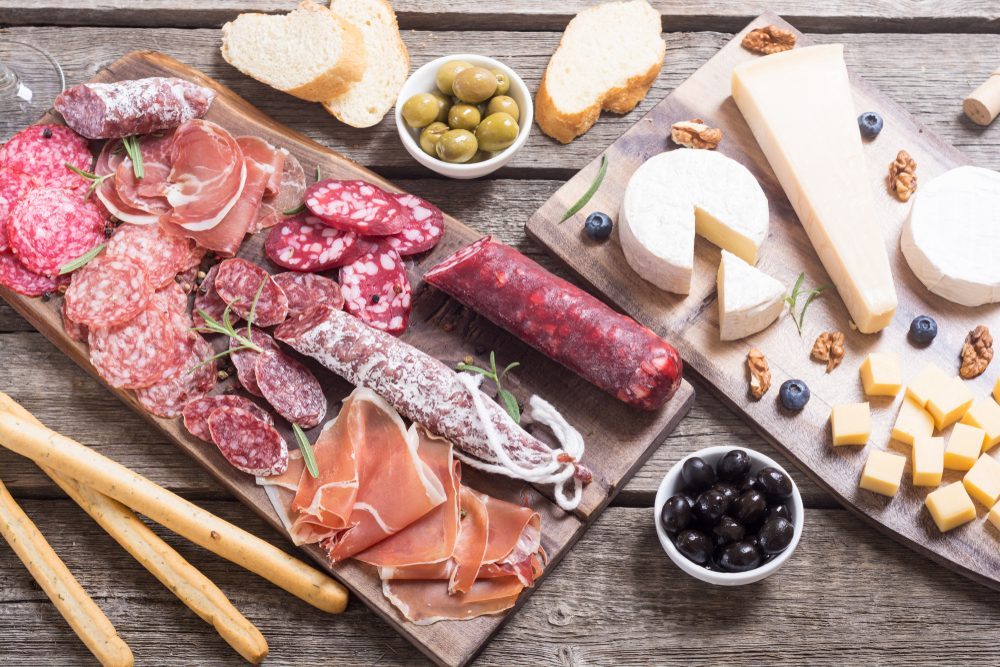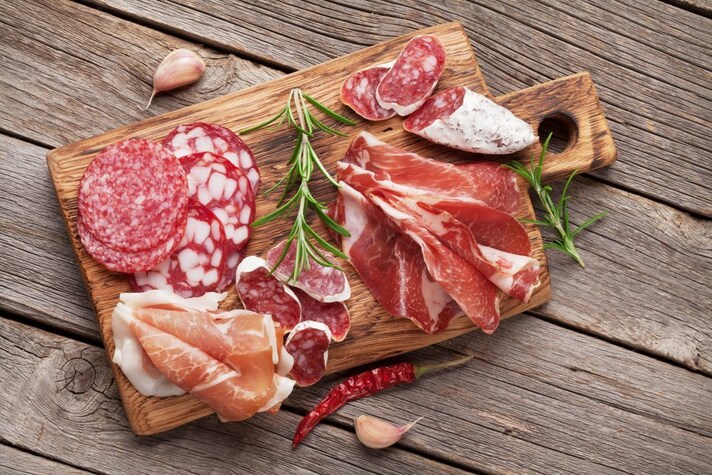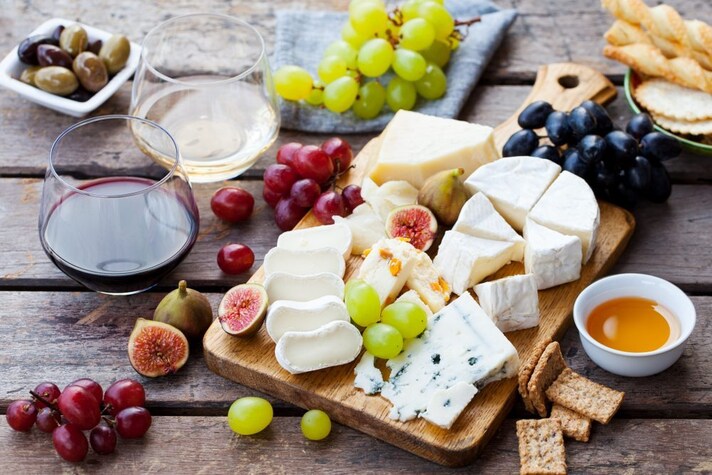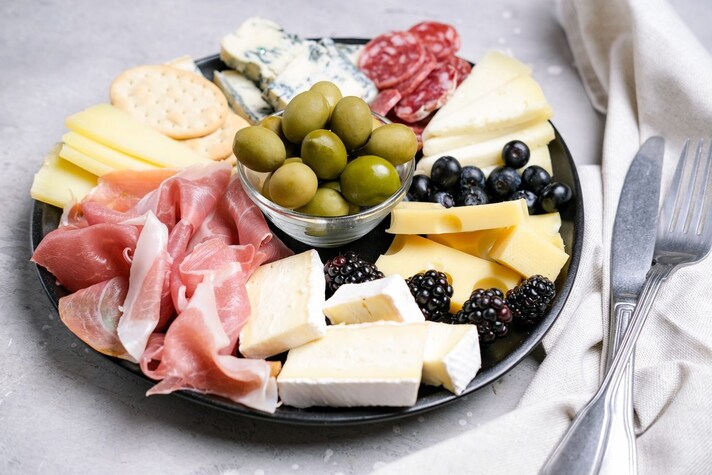How to Make The Perfect Charcuterie Board: All the Rules to Get the Best Result for Your Brunches!
How to perfectly compose cold cuts and cheese boards: what are the cuts, rules and precautions to use to bring to the table a simple appetizer loved by all.
;Resize,width=742;)
When we have guests for brunch and little time to dedicate to cooking, an excellent option is to serve, as an appetizer, a platter of cold cuts and cheeses. A simple dish, at least in appearance, appreciated by everyone because everyone can choose even just one of the products offered, which does not imply the use of the stove. But how do you compose an inviting and well-balanced dish from the point of view of taste and aesthetics? The choice among the deli excellences is very wide and, even in this case, it is good to follow a few rules that will allow you to bring the perfect composition to the table. Here is how to compose a platter of cold cuts and cheeses to perfection.
Choosing the Cutting Board or Support
Let's start with the choice of the cutting board, an operation not to be underestimated. There are different cutting boards that we can choose, just as there are other types of support:
- Wooden cutting board. The most rustic and classic, but also the most "dangerous", because it can release wood splinters if too old. If you want to use a wooden cutting board, buy one and use it only for serving, avoiding using the one that is used daily for cutting food.
- Steel cutting board. More than a cutting board it could be a tray: it is an ideal choice for those who love minimalism and do not want to worry about the "safety" of the support.
- Plastic cutting boards. Some are modern and colorful, but we still advise against using plastic: both for sustainability and aesthetic reasons.
- Ceramic support. A nice ceramic plate is probably the best choice: the white color enhances the natural colors of meats and cheeses and does not pose safety problems.
- Slate support. Very trendy in recent years, it is perfect for those who love dark colors, even if a little difficult to handle but very easy to wash. The same goes for marble supports, which can also be used to cut cheese on the spot.

Selecting and Cutting Cured Meats
A respectable cutting board requires at least 5 different varieties of cured meats, better if 6 or 7, but without exceeding the quantity so as not to confuse the guest. As for the quantity, consider at least 2-3 slices per diner: do not overdo it, otherwise there will be a lot of waste, because already sliced cured meats and cheeses must be consumed immediately, or in any case within 12 hours. Naturally, opt for high-quality products: cured meats, both raw and cooked, eaten in absolute terms immediately reveal any defects or poor quality raw materials. You can choose:
- Raw cured meats. We are talking about prosciutto, various types of salami, speck, bacon, coppa, guanciale, bresaola, lard, dried sausage and so on.
- Cooked cold cuts. Roast beef, mortadella, porchetta, cooked ham, cotechino etc.
As for the cut, mortadella, pancetta, lard, guanciale, prosciutto and coppa are generally cut into very thin slices, while salami, especially rustic ones, should be cut into slightly thicker transverse slices, even thicker if it is dry sausage. Some types of cured meats such as mortadella or prosciutto can also be cut into cubes, so as to have them as appetizers.
How to Compose the Cold Cuts Platter
If you are choosing raw cured meats and cooked cured meats, it would be better to bring two cutting boards to the table, avoiding placing them on the same cutting board. Arrange them side by side, without overlapping them, starting with the cured meats with the sweetest /delicate flavor and moving on to those with the most intense or spicy flavor. Another rule is that the cured meats should also be arranged according to their degree of seasoning: from the freshest to the most seasoned. The leaner cured meats should be placed first, while the fattier and more marbled ones (the small veins of fat scattered throughout the slice) should be placed later. For example, if you have chosen to use salami, cured raw sausage, bresaola, raw ham and guanciale, the order should be bresaola, guanciale, raw ham (but here too it depends on the degree of seasoning), salami and cured sausage.
Never cut cold cuts in advance, they could dry out: it is much better to slice them immediately or a few minutes before presenting them. In the case of cold cuts purchased in a delicatessen already cut, if possible, have them vacuum-packed or in an airtight container: in this case, buy them close to dinner.

Choosing, Cutting and Composing the Cheese Board
A good cheese board should have at least 5 products: a fresh cheese, two semi-mature cheeses, a mature cheese and a blue cheese. In this case too, the above rules apply:
- First the freshest cheeses : stracchino, mozzarella, robiola, crescenza and so on.
- Then there are the medium-aged cheeses with soft or stretched curd: brie, taleggio, gorgonzola and various blue cheeses, provole, scamorze, fresh fontina, formaggelle, tome etc.
- Third place goes to even more mature and semi-hard cheeses: medium-mature pecorino, gruyere, asiago, mountain fontina, bra and so on.
- Finally, very mature cheeses such as parmesan, grana, mature pecorino.
As for cutting, the freshest cheeses will be brought to the table in large pieces or directly in their original shape (this is the case with robiola and crescenza), while mozzarella should be served as it is: never cut it, to avoid losing too much water. Continuing with the more mature cheeses, these can be cut into chunks or sticks of varying thickness, while the super mature ones should be presented in flakes.
What About the Mixed Cutting Board?
For convenience, you can also bring a mixed cutting board to the table: in this case, however, the variety will inevitably suffer a little, also because it is better to put a few well-distinguished products, rather than bringing to the table a cutting board of overlapping and disordered cheeses and cured meats. In this case, choose a maximum of 4 cheeses and 4 cured meats, of different types, focusing more on variety. In any case, we suggest two separate cutting boards, so as to fully savor the flavors of the various products and give guests the opportunity to choose whether to opt for just one of the two.

What is a "Vertical" Cutting Board?
Borrowing a term typical of wine and spirits tastings, you can also create a vertical cutting board, that is, a cutting board with a single type of product, presented however in different ages. For example, this can be done with prosciutto, given the great variety we have available, but also with cheeses such as pecorino, blue cheese and parmesan. However, this is a cutting board for true enthusiasts: to be safe, it is better to find out about the tastes of your guests first.
What to Pair With Cold Cuts and Cheeses
The cutting boards can be enriched by combining them with other products, to be presented separately or even on the cutting board itself. You can combine different types of honey, jams, spicy chutneys, mustards, fresh fruit and of course accompany everything with bread, breadsticks and/or crackers.
As for honey, it is important to pair it with cheeses by contrast: sweeter honeys such as honeydew or acacia honey should be paired with spicy or blue cheeses, while more bitter types such as chestnut should be paired with sweeter cheeses. The same goes for jams: a berry jam, sweet but also acidic, should be paired with a delicate and rounded cheese, so as to enhance its flavor. A jam that focuses more on sweet notes, such as a quince jam, can be paired with spicier and more savory cheeses.
As for cured meats, the best pairing remains that of bread: in this case too, you can opt for different types of bread – more or less rustic, stuffed with seeds or dried fruit and so on – or choose drier elements such as crackers and homemade breadsticks.
;Resize,width=767;)
;Resize,width=712;)
;Resize,width=712;)
;Resize,width=712;)
